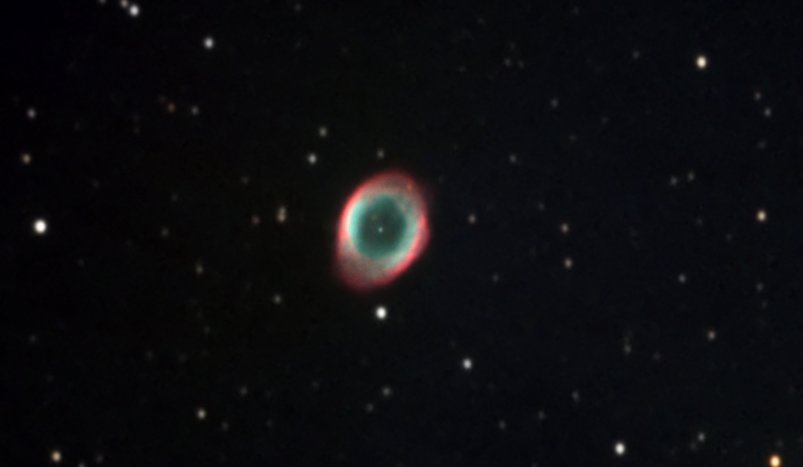
M57 is an expanding shell of gas thrown off by a dying star. The gasses forming the ring glow as a result of ultraviolet radiation from the central star in a process similar to that which causes a fluorescent light to glow. Different elements glow at different colors because the electron shells of each element provide unique energy levels, and when electrons jump from a higher energy level to a lower energy level, they emit discrete wavelengths of light. The nebula shines at magnitude 8.8, while the central star is a faint magnitude 15.29. The central star is barely visible in this image. M57 is located about 1500 light-years away. The nebula is approximately 500 times the size of our solar system. The gasses of the nebula are expanding at a radial velocity of about 12 miles per second.
M57 was discovered in 1779 by French astronomer Antoine Darquier de Pellepoix. M57 was the first planetary nebula found. Charles Messier added it to the second published version of the Messier catalog. The ring nebula is called a "planetary nebula" for historical reasons. Planetary nebula were so named because they resembled the disk of a planet in the crude telescopes of the 18th Century.
This is an RGB composite CCD image taken with an SBIG ST-8E CCD on a Takahashi Mewlon 210 telescope at prime focus. The exposures were made from my backyard in Scottsdale, Arizona.
M57 (NGC 6720)
Constellation: Lyra
RA: 18h 53m 43.5s Dec: +33d 01' 56"
May 14, 2005
Image by Sid Leach
Scottsdale, Arizona
Recent Images.
Complete list of images.
Description of equipment used to acquire images.
Home
Feedback and comments should go to Sid